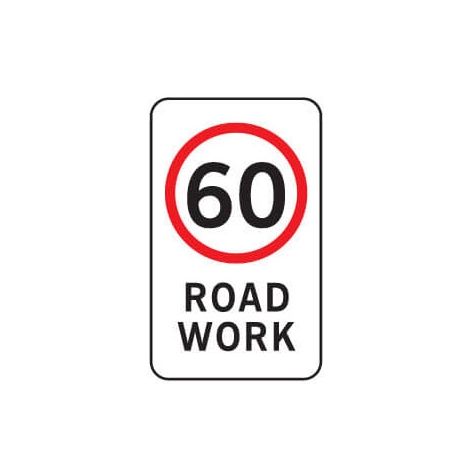Roadside safety for NSW infrastructure projects
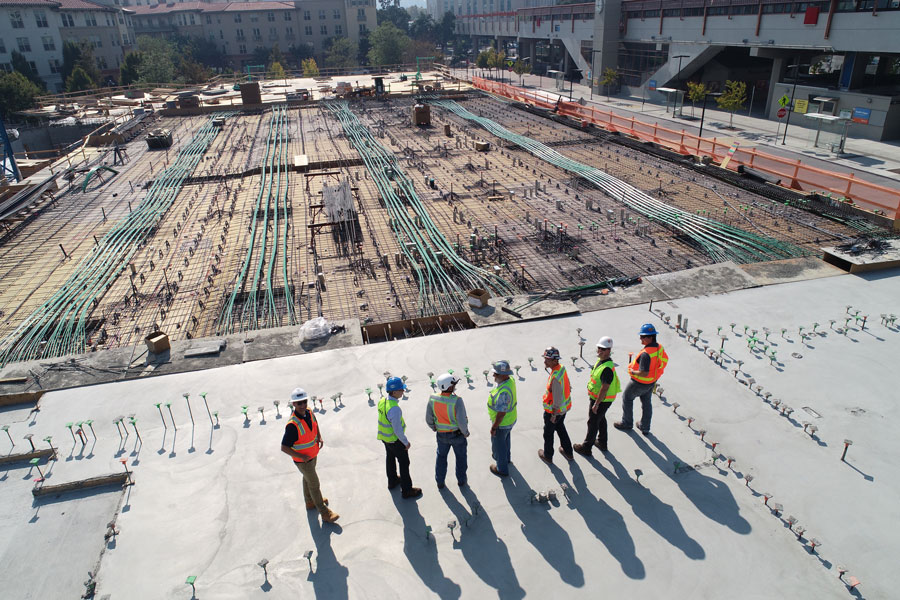
Key information resources for NSW infrastructure contractors
It goes without saying that safety on infrastructure and construction sites is absolutely critical.
Not only do infrastructure contractors need to ensure the health and wellbeing of their workforce, but they are also frequently working alongside or often in the middle of public spaces. This brings the additional element of pedestrians and motorists into the mix, creating more complex safety issues.
Keeping everyone safe is non-negotiable - whether it’s workers on your site, the public, nearby communities or road users.
The New South Wales Government recognises this fact, as evidenced by news of its $400 million road safety blitz (read more) which will see hundreds of infrastructure projects deployed across the state to reduce road trauma and save lives.
These projects cover things like installation of rumble grids, widening centre lines, installing safety barriers, shoulder sealing and median upgrades, to name just a few. This funding boost will serve to make communities safer - but keeping safety front of mind whilst actually working on these project is vitally important too.
We’ve prepared this resource guide for infrastructure contractors working across road safety projects in NSW to ensure that road work improvements can be conducted in a responsible, sustainable fashion - without causing any additional hazards on our roads.
In this article you will find:
- General safety information relating to NSW roads
- Speed signs, roadwork signs and regulations
- Information about which safety barriers are approved for use in NSW
- Use and placement of bollards, cones and other safety equipment
- Information on road closures and how to safely conduct them in NSW
- Examples of safety equipment used on NSW infrastructure projects such as road widening, light rail construction and more
- NSW road safety resources, statistics and graphs
Please note this information has been provided as a guide only. Please ensure you conduct your own research and due diligence before acting on any of this information.
Contents:
- Signposted speeds in NSW
- Speed limits on highways and freeways
- Road work speed limit signs
- Other common speed zones in NSW
- Speed signage around schools and heavily built up areas
- Shared zone speed limits
- When there is no speed limit sign
- Roadside safety signs: common signs for road work
- Who decides which roadwork signs should be used around the site?
- Ongoing checks for temporary road signs
- Road closures and traffic management for infrastructure projects
- How to safely close roads or create detours
- Setting up restricted or gated access with boom gates
- Devices used when closing roads and lanes
- Using barrier boards for lane closures
- Safety cones and bollards for NSW road projects
- NSW approved traffic cones
- Plastic temporary bollards
- Setting up your site in an environmentally sound manner
- Spill kits, silt socks and drain protection traps
- Keep your team safe: accident and first aid response
- First aid
- High Risk First Aid Kits
- Emergency response equipment
- Use of roadside safety barriers in NSW
- Regulations for barriers
- Barriers and roadside protection for highways and freeways
- Which barriers are best for smaller maintenance jobs?
- Barrier limitations
- Regulations for barriers
- Installing temporary fencing
- Conclusion
Bonus lists of helpful links:
- NSW Roadside Safety Resources and Guidelines
- Statistics and charts on NSW Road Safety, incidents and casualties
The state of our roads: increased traffic = increased risk
More traffic
Infrastructure Australia reports that traffic volumes on the New South Wales road network increased by 14% from 2008 to 2017 (read more). In addition, freight traffic volumes are expected to nearly double from 2011 to 2031.
More fatalities
NSW is also one of only two jurisdictions to experience an increase in fatalities per vehicle kilometre travelled between 2016 and 2017. Our fatalities are also skewed towards regional communities, with over two-thirds of deaths every year occurring on country roads.
NSW road network safety improvements are being undertaken across many parts of the state, with 261 priority projects being delivered across NSW, 150 of these on regional roads. RMS has published a list of major projects through to 2023 (read more), showing a significant infrastructure pipeline for NSW.
Infrastructure contractors will continue to play a critical part in making communities safer, so let’s break down the various components that go into safely setting up and completing roadside safety projects in NSW.
Signposted speeds in NSW
Across metro and regional areas of the state, our roads are signposted with speed limit signs indicating the safe speed of travel for motorists.
Speed limits on highways and freeways
Regulatory speeds on highways, motorways and freeways are typically upwards of 80km/hr to a top of 110km/hr. As a great deal of roadside construction and maintenance takes place alongside major roads, contractors need to work alongside NSW RMS and local council representatives to temporarily lower speed limits when construction is taking place.
Roadside safety for workers is paramount, and reducing speed limits when working in the road corridor can have a marked effect on the severity of crashes. When limits are lowered by a substantial amount, worksites become much safer and any accidents that do occur often have a better outcome for both the work crews and the motorist.
Road work speed limit signs
Roadwork signs alert motorists to the start and end of roadworks and the speed limit for that area. In many cases, the speed limit around worksite work sites will reduce to anywhere from 80km/hr down to 40km/hr in line with the guidelines in the NSW RMS Traffic Control at Worksites Manual (read more).
Here are some examples of these guidelines:
- In situations where workers are on foot between 3 and 6m away from a traffic lane with no physical barrier, the speed zone could be reduced to 80km/hr
- In situations where workers are closer than 1.5m to traffic with no barrier in between, the speed may be reduced to 40km/hr
In all situations, it is up to the traffic control professional to design a plan and suggest an altered speed limit that keeps both workers and motorists safe. Many factors go into determining how, when and by how much to reduce the speed limit, and a trained professional needs to complete this task.
This person needs to hold a SafeWork NSW qualification and demonstrate ompetency in developing or modifying a work zone traffic management plan (read more).
Other common speed zones in NSW
Speed signage around schools and heavily built up areas
School zones exist to ensure children can move about more safely during school start and finish times. They are typically in force only during certain times on school days, ensuring motorists slow down at peak times. School zones also feature flashing lights to draw attention to the reduced speed limits. School zone limits typically drop the speed limit on residential roads to 40km/hr.
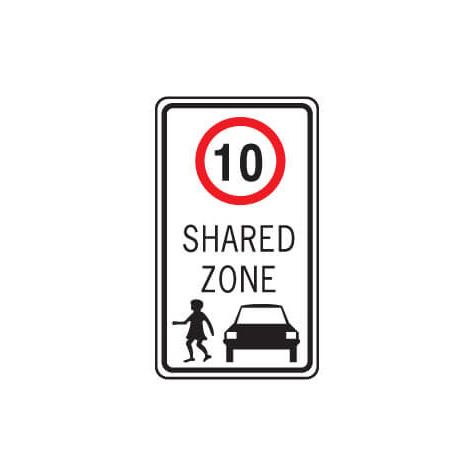 Shared zone speed limits
Shared zone speed limits
A shared zone is where pedestrians, bicycles and other vehicles can share the road safely.
Shared zones usually have a speed limit of 10km/h and also stipulate that drivers must give way to any pedestrian in a shared zone, including slowing down and stopping, if necessary, to avoid them. A typical example may be in a holiday park or in shared areas of a residential estate where pedestrians, children and cyclists frequently share the road with cars.
When there is no speed limit sign
Some smaller local and council roads are not always signposted, and their default speed is 50km/hr. This applies to built up areas that feature street lights and roadside buildings. On more major roads, the default speed limit of 100km/hr applies if there is no signage indicating otherwise.
Where to find more information: NSW RMS has detailed information on safe driving speeds and explanations of different speed signs (read more).
Roadside safety signs: common signs for road work
Having clear, adequate and appropriate roadwork signs in place is an important part of pulling off a safe project.
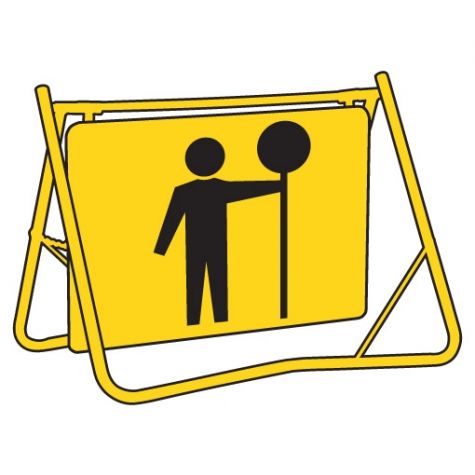 Some common work zone signs used in NSW include:
Some common work zone signs used in NSW include:
- Roadwork ahead
- End roadwork
- Worker pictogram
- Traffic controller pictogram
- Reduce speed
- Road closed
- Detour
All of these signs (and their official sign numbers) are in the NSW RMS traffic signs register.
Who decides which roadwork signs should be used around the site?
There is a range of different guidelines laid out in the NSW RMS Traffic Control at Worksites Manual, relating to how many signs to use, how far ahead to warn motorists of changed conditions, and how to appropriately space the signs around your site.
Determining which specific signs to use, where to place them, and which other devices to use (such as cones and bollards) is a task for someone who has the necessary qualifications.
As with speed limit reductions, the person responsible for organising temporary roadwork signs needs to hold a SafeWork NSW qualification and demonstrate competency in developing or modifying a work zone traffic management plan (read more).
Ongoing checks for temporary road signs
Maintaining roadwork signs as the site conditions change is important too, ensuring clear communication to both pedestrians and motorists.
As the project changes and progresses, the designated person (usually a trained traffic controller) needs to check, update and maintain the signs around the site to ensure they are still appropriate as the work changes.
To find out more, review the guidelines in the NSW TCAWS Manual.
Road closures and traffic management for infrastructure projects
How to safely close roads or create detours
Whenever you are undertaking roadside construction or maintenance work, you’re likely to need a traffic management plan or TMP.
Temporary traffic management can be one of the highest risk activities on a roadwork site, so detailed planning is a must. Working with all stakeholders to create a traffic management strategy and a TMP is the best way to ensure you meet work health and safety requirements and provide a safe work environment, whilst also maintaining road user safety and network efficiency.
Step 1
Understanding all the factors involved is the first step. By working with all parties to gauge the context of the road environment, the work required and the potential risk to road workers and road users will give you a high level view of how to approach managing traffic around the site.
This will typically fall into one of three categories: directing traffic ‘around’, ‘past’ or ‘through’ the work site or temporary hazard.
Step 2
Once the best method has been determined, the next step is to put together a traffic management plan (TMP), involving a risk assessment and documentation on how to safely close lanes or roads.
The NSW RMS TCAWS manual has much more detail on the process in section 3, as well as templates and examples of traffic management strategy templates.
Step 3
Ensure your final plan is put together by someone authorised to do so! Like many aspects of planning a large project, the TMP needs to be undertaken by a trained professional, and ultimately put into place on site by someone holding a qualification to ‘Prepare Work Zone
Setting up restricted or gated access with boom gates
Often large sites will require easy access by workers, delivery trucks and large plant, but need to be closed off to the general public. This is where flexible solutions such as portable boom gates can be useful.
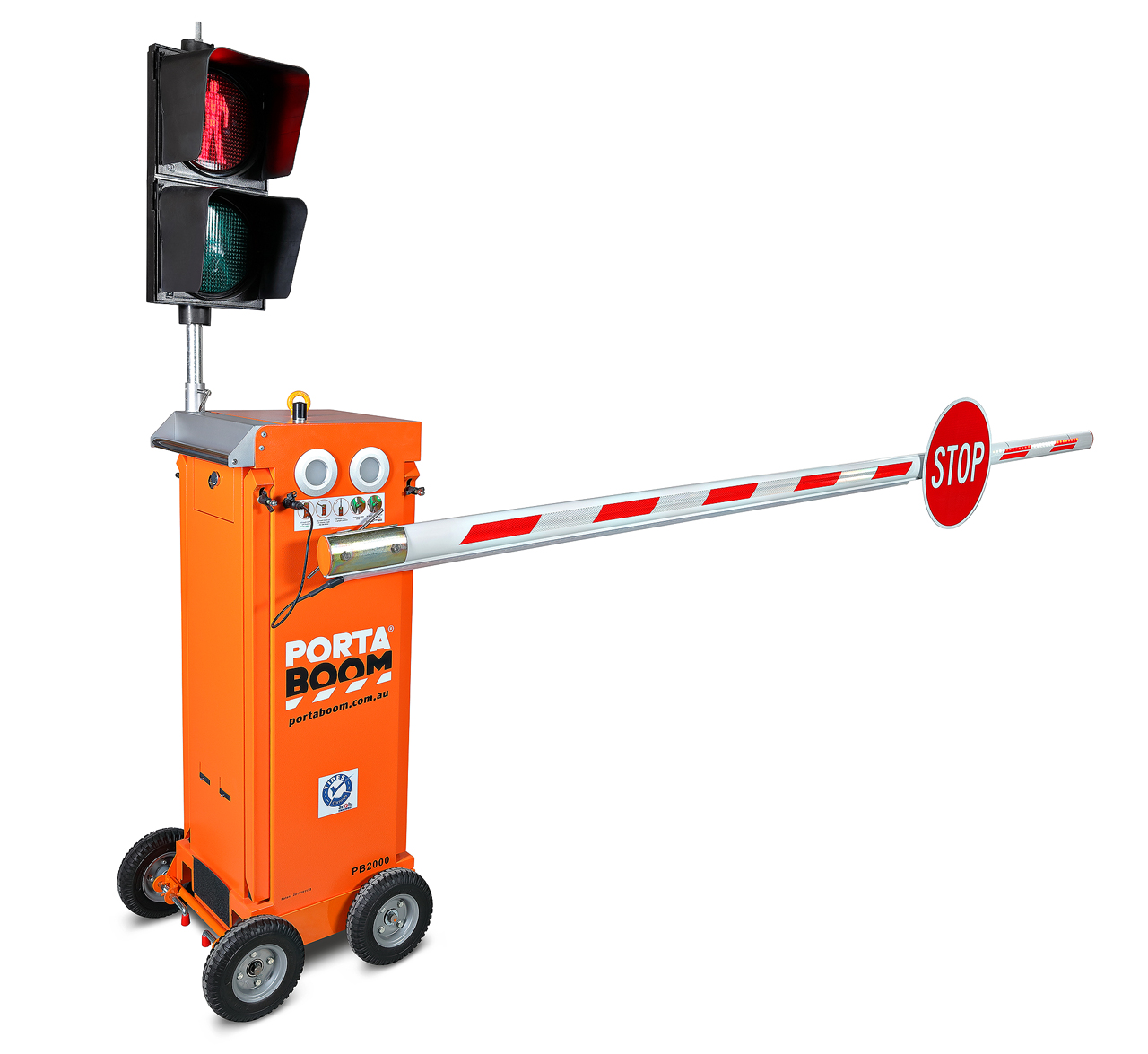 Products such as the Portaboom allow remote controlled gated access to large sites, as well as helping contractors to manage pedestrian movements along footpaths and cycleways near the work site.
Products such as the Portaboom allow remote controlled gated access to large sites, as well as helping contractors to manage pedestrian movements along footpaths and cycleways near the work site.
The Portaboom portable boom gate is operated by remote control, meaning workers can stand in a safe zone - not in the direct line of traffic. Auto sensors are available to allow even more remote control on site.
Using a TIPES Approved portable boom gate has recently become mandatory in the TCAWS Manual (v6), for any non-urgent work on roads where the posted speed limit is greater than 45km/hr.
Specifications on the Portaboom boom gates can be found here - this unit is TIPES certified for use on Australian roads and has been proven at many infrastructure sites across the country.
Devices used when closing roads and lanes
Using barrier boards for lane closures
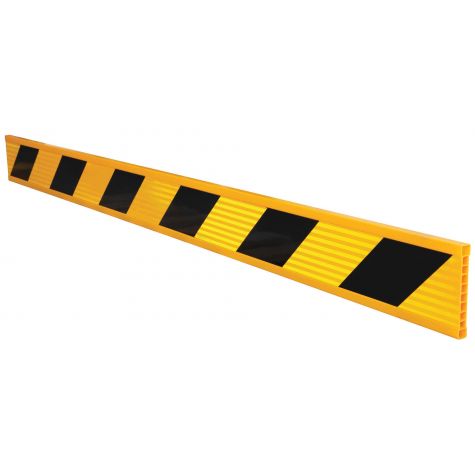 Barrier boards are yellow and black diagonally striped boards that are used to close lanes or entire roads. By combining them with one or two metal legs, they provide an easy-to-see indication to motorists that an upcoming lane or street is closed for repair, maintenance or construction.
Barrier boards are yellow and black diagonally striped boards that are used to close lanes or entire roads. By combining them with one or two metal legs, they provide an easy-to-see indication to motorists that an upcoming lane or street is closed for repair, maintenance or construction.
For barrier boards to be approved by NSW Roads and Maritime, they need to be 2.5 metres wide with 150mm wide alternating stripes in yellow and black. Made from plastic or timber, the yellow striped pattern is achieved by applying reflective material.
Plastic barrier boards are often preferred by traffic control professionals as they are lighter and easier to set up on site.
Styles of barrier boards available include:
- Median barrier boardswith Class 1 reflective tape
- Uni-directional barrier boards (double-sided)with Class 2 Reflective tape
More traffic delineators are available to view here.
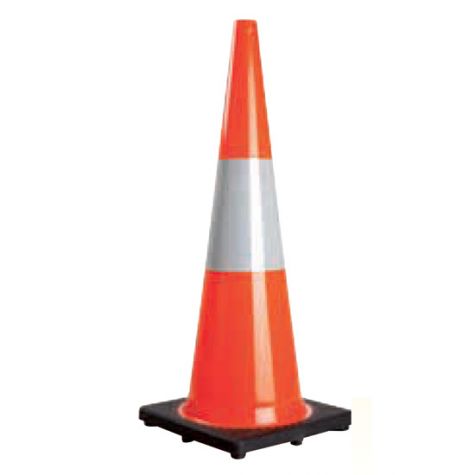 Safety cones and bollards for NSW road projects
Safety cones and bollards for NSW road projects
There are a handful of common devices used for roadside safety - these include traffic cones or witches hats, barrier boards, barrier bars, weighted plastic bollards, barrier mesh fencing and barrier tapes.
All of these relatively cheap, simple products are instantly recognisable by motorists, adding to the level of safety around the site. Cones and bollards are used to define the traffic path past or through work areas, ensuring motorists follow a specific path.
As with most aspects of roadside work, guidelines apply for how to use them on NSW roads. Infrastructure contractors should be aware of these requirements, especially when completing projects funded by the NSW Government.
NSW approved traffic cones
Traffic cones or witches hats come in various sizes for different applications. The typical sizes of orange cones are 300mm, 450mm or 700mm high, and if they are going to be used at night (which is quite common) they should have a reflective band around the middle.
Plastic temporary bollards
Temporary bollards, also known as T-top bollards, are used in conjunction with barrier boards and other devices to define parts of the work area. To be compliant with NSW specs, bollards need to be fluoro red or orange, stand higher than 900mm and feature a fluorescent strip. Suitable for any speed roads, they are available with either a 6kg or 9kg weighted base to stop them from falling over.
Setting up your site in an environmentally sound manner
There are a few essential items that every site needs in order to comply with workplace health and safety regulations, environmental protection laws and more.
Having a solid plan in place in the event of a chemical or hydrocarbon spill is important for several reasons.
Not only will you ensure spilt liquids don’t cause slip hazards or potential chemical burns, but you’ll have the right clean up equipment on hand to prevent these harmful substances from entering drains and waterways (not to mention saving you from EPA fines).
Some of these products are listed below, all of which are available from Jaybro.
Spill kits, silt socks and drain protection traps
Using a combination of silt and runoff protection such as silt socks, silt fencing, coir logs and litter traps in drains prevents contaminated runoff from gradually exiting your site and running down into stormwater channels.
These easy to use traps and socks can be put in place before heavy construction starts, protecting drains, gutters and watercourses.
Trash screens and traps are particularly useful in trapping any litter or material that does happen to get washed out of the site and is not caught by silt fencing and other on-site methods.
Plus, by reducing blockage risks further down the line, there is less requirement to replace damaged pipes in the future. Pipes are often damaged by the scouring effect of hard rubbish, and large particles of concrete or sediment can be carried at high velocity inside pipes, chipping away at the interior.
Keep your team safe: accident and first aid response
First aid
Appropriate first aid facilities will vary according to the site, the activities being undertaken, and the number of workers.
The contractor must supply an appropriate number of first aid kits, and place them in an obvious, easily accessible location. They must be clearly identifiable, signposted and never locked.
First aid kits should be located close to areas where there is a higher risk of injury. All team members need to be advised of their location, typically as part of a site induction or OHS induction. It’s important to remember that anyone on site, not just regular workers, may need to access the first aid supplies, so take into account the potential number of people on site including contractors, subcontractors, visitors, delivery drivers and anyone else who may be in the area.
Find out more at Safe Work NSW - download the NSW First Aid in the Workplace Code of Practice here.
High Risk First Aid Kits
Employers in high risk workplaces like construction sites must provide:
- one kit, including specific first aid modules, for up to 25 employees
- two kits, with specific modules, for up to 50 employees
- one additional kit, with specific modules, for every additional 50 employees
- Where there are separate work areas, you may need to provide portable kits in each work area, including in vehicles.
Employers also need to provide safety signs to identify where first aid kits are stored. Signs should consist of a large, easily visible white cross on a green background.
- View first aid signs available
Emergency response equipment
Along with first aid kids, other equipment that can help reduce the severity of accidents or injuries should be included in your site.
Items such as emergency showers and eyewash stations are designed to help manage chemical burns by flushing away chemicals and other damaging liquids that may be accidentally splashed on a worker.
Defibrillators or AED’s are also recommended at construction sites in case of a cardiac arrest incident. These defibrillators are simple to use and come with voice guidance so that even someone who is not trained in their use can provide first aid to anyone in need.
If your site is in a remote area or there is a body of water nearby, you may need additional emergency supplies on hand such as life vests and life rings in the case of waterside sites, or survival equipment for remote sites. This can include provisions for remote rescue such as flares or large reflective sheets for attracting attention, as well as snake bite kits and other specialist equipment.
Use of roadside safety barriers in NSW
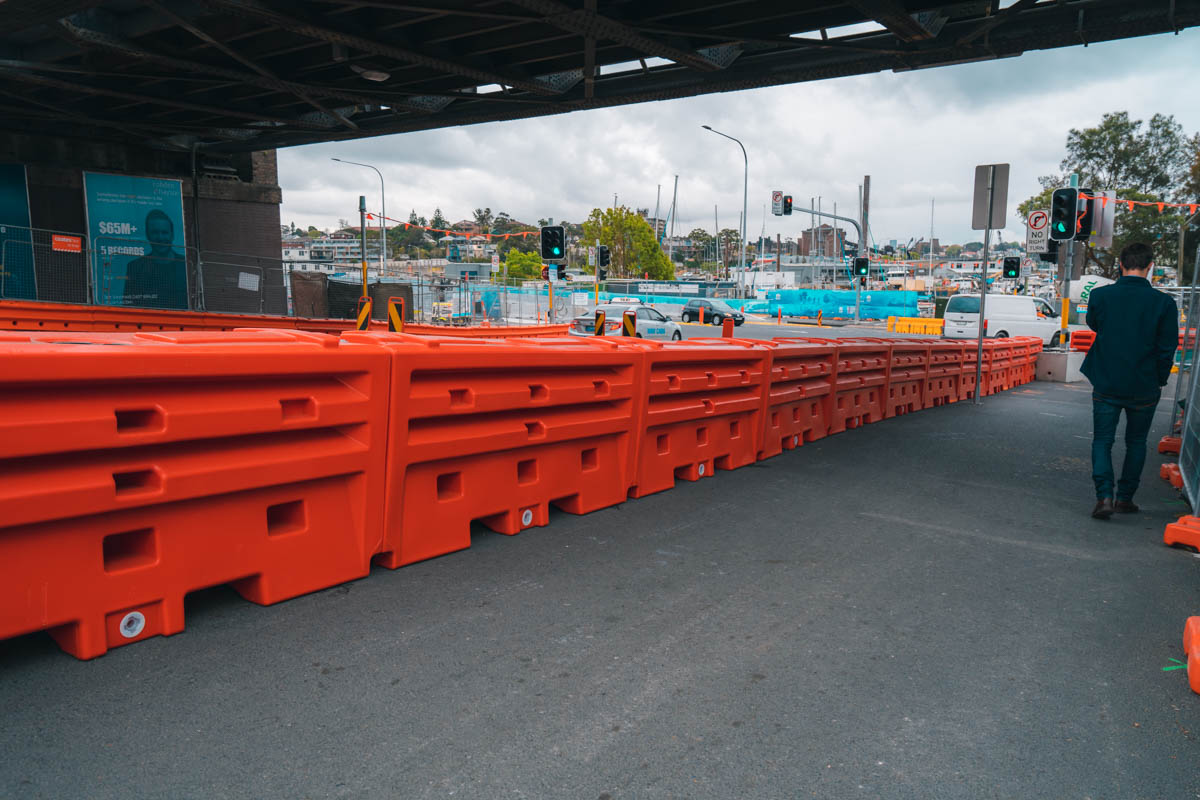 Temporary road safety barriers are required at many sites which border the road corridor. They are also commonly used within the perimeter of the construction site, helping to keep people and plant separated and safe.
Temporary road safety barriers are required at many sites which border the road corridor. They are also commonly used within the perimeter of the construction site, helping to keep people and plant separated and safe.
There is a wide range of different barriers that are approved for use in NSW, and they fall into two main groups: water filled and concrete.
There are also lightweight crowd control barriers or pedestrian barriers, however, the main barriers used by infrastructure contractors as a safety barricade are the water filled and concrete varieties.
Regulations for barriers
NSW RMS has adopted the MASH testing criteria as the nominal standard for road safety hardware. This means that any barriers used for traffic applications need to have a specific MASH test level.
RMS advises that only products that have been assessed and accepted should be installed on the NSW classified road network. This applies to all installations including work zone or temporary installations.
A full list of NSW MASH approved temporary barriers can be found on the RMS website (read more). Amongst these are the popular DB80 concrete jersey barriers and several different water filled barriers that are available from Jaybro and Fortress Fencing.
Links to the individual RMS approval certificates can be found below:
Waterfilled:
Lo-Ro water cable barrier - MASH TL-2
Concrete:
DB80 jersey barrier - MASH TL-3
Barriers and roadside protection for highways and freeways
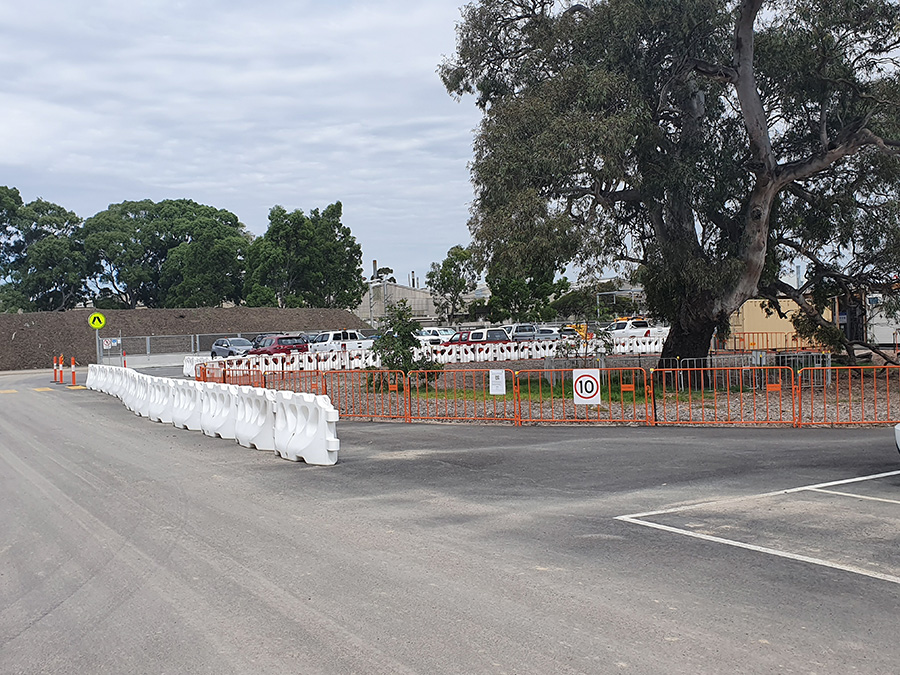 Highway barriers are ideal for any situations where people and vehicles need to be kept well away from each other. You can use them to line the edges of work sites during highway, motorway and freeway works or to create safe pedestrian zones along streets where work is taking place.
Highway barriers are ideal for any situations where people and vehicles need to be kept well away from each other. You can use them to line the edges of work sites during highway, motorway and freeway works or to create safe pedestrian zones along streets where work is taking place.
Concrete barriers are typically the first choice for higher speed zones: NSW RMS has approved the Deltabloc DB80 barriers for roads up to 100km/hr.
Which barriers are best for smaller maintenance jobs?
If you are working on lower speed rated roads, local council roads or on other small projects, a concrete barrier may be overkill for your needs. If you only require MASH TL-2 protection, a water-filled barrier will most likely do the job.
These barriers are tough and lightweight enough to move easily when empty, but when filled with water they provide a solid barrier that safely deflects out of control vehicles travelling up to 70km/hr. The Lo-Ro barrier provide this level of protection.
More information can be found in our article on RMS Approved barriers for temporary roadwork applications
Barrier limitations
It’s important to understand when using safety barriers around the worksite that although they are tested and proven to prevent breakthroughs from cars at certain speeds, they are not necessarily 100% foolproof. For example, an out of control vehicle could still enter the worksite and cause serious damage if it was speeding, so with all barriers, the human factor needs to be considered.
It’s critical to ensure all workers are aware of the risks in working in the road corridor. Setting up the necessary exclusion zones so that workers don’t get too close to the barrier when working will help to increase the effectiveness of the barriers. This space is known as the working width and is typically specified on the RMS barrier acceptance conditions.
For example, the Lo-Ro has a working width of 4.1 metres when used in a TL-2 (70km/hr) application.
See the links above to the water filled and concrete barrier certificates for individual working widths for each barrier.
Installing temporary fencing
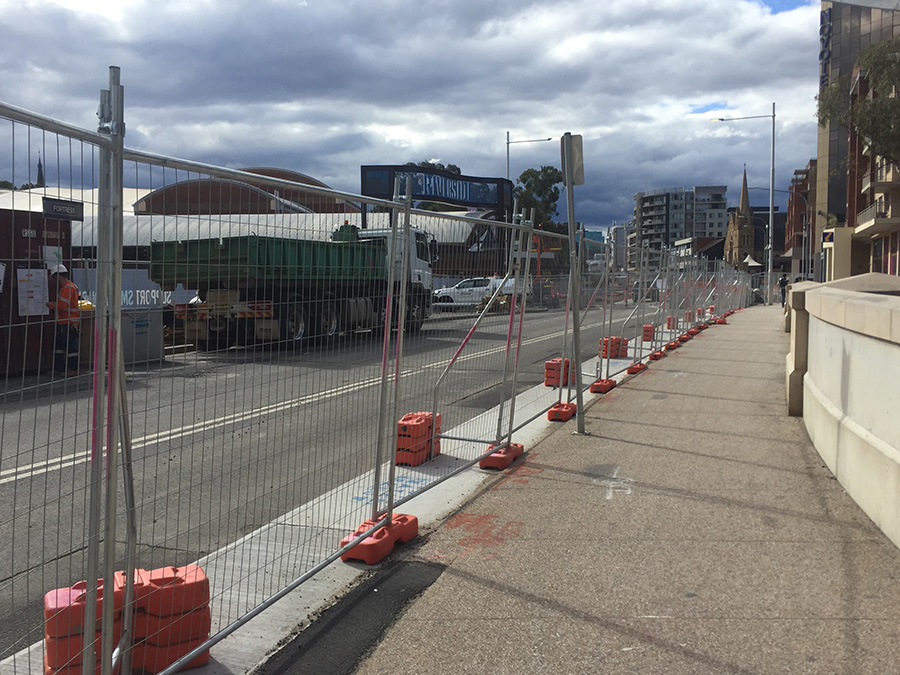 Along with road barriers, it’s likely that contractors will need to secure the entire perimeter of their site with temporary fence panels.
Along with road barriers, it’s likely that contractors will need to secure the entire perimeter of their site with temporary fence panels.
It’s often more economical to buy temporary fencing rather than hire it, especially for long term projects or where many smaller projects will be completed and the fence panels can be moved from site to site.
In Australia, temporary fencing for construction sites must meet Australian Standard AS4687 ‘Temporary Fencing and Hoardings’. Having a strong and reliable temporary fence in place is as much about site security as it is about public safety. Site managers bear great responsibility for the safety of their construction crews, but preventing the public from entering the site is also necessary to avoid WH&S issues.
Temporary fencing panels should have a type of steel mesh that is difficult to climb - this helps deter thieves and vandals. Temporary fencing should also surround the entire site and should be designed to be locked when not in use. Any gates and doors should swing inwards, and the fence itself should be at least 1.8 metres tall.
If the fencing is going to encroach on Council land such as footpaths or roads, the contractor will need permission to erect it. This may come with some stipulations (ie: a Council requirement for additional pedestrian signage).
Wherever your fencing is located, it’s important that it doesn’t cause an additional unintentional hazard. Fence feet or bases should be placed in such a way that they don’t become a trip hazard, and wherever long runs of fencing are used they should be braced to prevent them tipping over in high winds.
Fences like the Fortress 2000 Series and 3000 Series offer peace of mind for contractors. Find more details in the links below.
Conclusion
A lot of factors come into play when you are setting up a safe, successful project. Always make sure you refer to the local NSW recommendations, Council requirements, NSW Government specifications, Australian Standards and workplace health and safety guidelines to ensure you complete your projects as safely as possible.
When in doubt, get advice from the experts. The Jaybro team has a wealth of knowledge when it comes to supplying some of Australia’s biggest infrastructure projects, including Sydney Metro, Westconnex and many more projects of all shapes and sizes.
Our team are on hand to offer advice and guidance to ensure you get the right products for your individual application. Give Jaybro a call on 1300 885 364 or email sales@jaybro.com.au and our knowledgeable team will help you find what you need.
NSW Roadside Safety Resources and Guidelines
- NSW RMS Traffic Control at Worksites Manual: the ‘bible’ for setting up any safe road work project or worksite
- Infrastructure pipeline for NSW: project values, stages and timelines
- A searchable database of all approved NSW traffic signs
- The official description of speed zones, limits and penalties in NSW
- How to get qualified to prepare traffic management plans in NSW
- Infrastructure Australia’s high priority road network safety improvements for regional NSW
- The ‘Towards Zero’ NSW Road Safety Plan 2021
- Code of Practice - First Aid in the Workplace
- MASH approved barriers for NSW work zones
Statistics and charts on NSW Road Safety, incidents and casualties
- Statistics around crashes and serious injuries on NSW Roads - searchable by year, LGA and severity of the injury
- Transport for NSW’s Centre for Road Safety statistics for 2021
- NSW road toll statistics and trends over the past century (note the massive difference that education around compulsory seatbelts and the introduction of RBT has made on our stats!)
 Sign In
Sign In 

